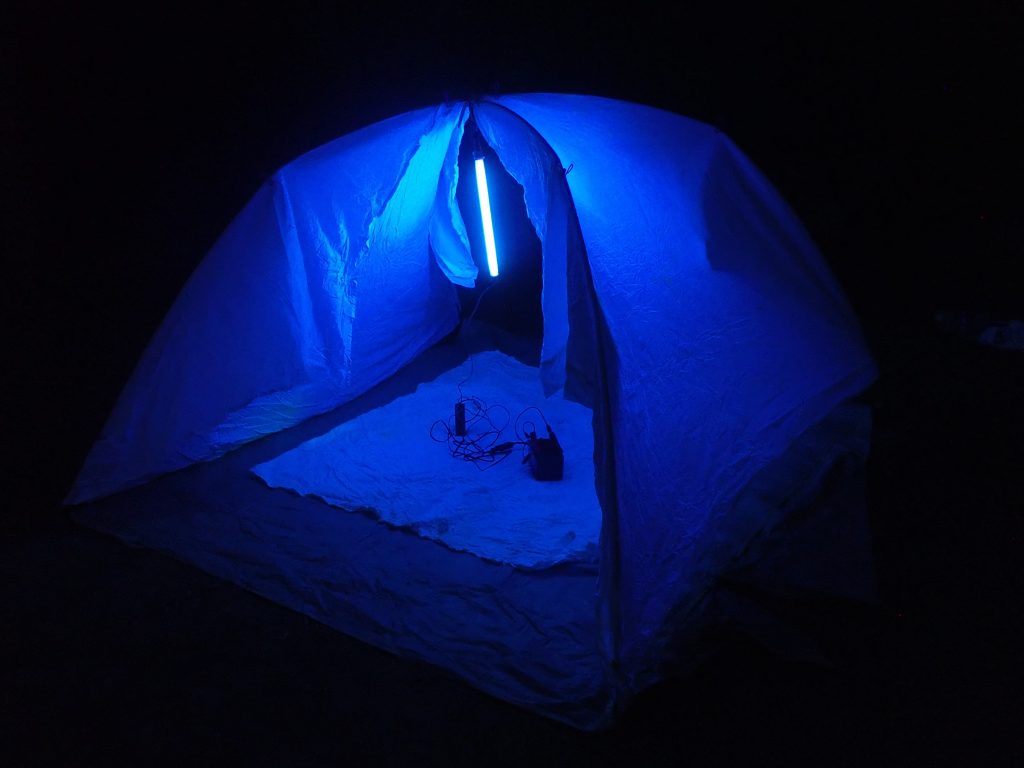
It’s been hard for me to get started with this years mothing. First there was Pam’s convalescence, then just the negative inertia of trying to get myself to leave my wife and the comfort of our home at just the hour when we’re really settling in for the night. So I decided that I’d do a little camping/mothing at Canyon Creek in northern Clark County, Washington over Memorial Day weekend, which would also facilitate getting on the stream at the crack of dawn for the opening day of trout fishing in creeks. But as I was getting ready to go last Friday, I suddenly remembered the (presumably) drunken idiot in a huge 4×4 pickup who drove right through our lighting setup on a Friday night a couple years ago in the same area, causing my friend Craig Sondergaard and I to dodge out of the way, before the idiot nearly put himself into the Canyon Creek canyon swerving to miss Craig’s portable generator, then roared on down the road. We never knew whether it was just inebriated shenanigans, or whether it was a manifestation of the anti-science/anti environment wave that has swept this country in the last decade or so, but at the time I swore to myself that I wouldn’t run lights where I was isolated and vulnerable to attack or simple mischief on weekend nights again. And Memorial Day weekend, along with Labor Day weekend, seems to be a siren call for people who want to engage in behaviors that would not be acceptable in residential areas, people who like the outdoors primarily because there are no cops around.
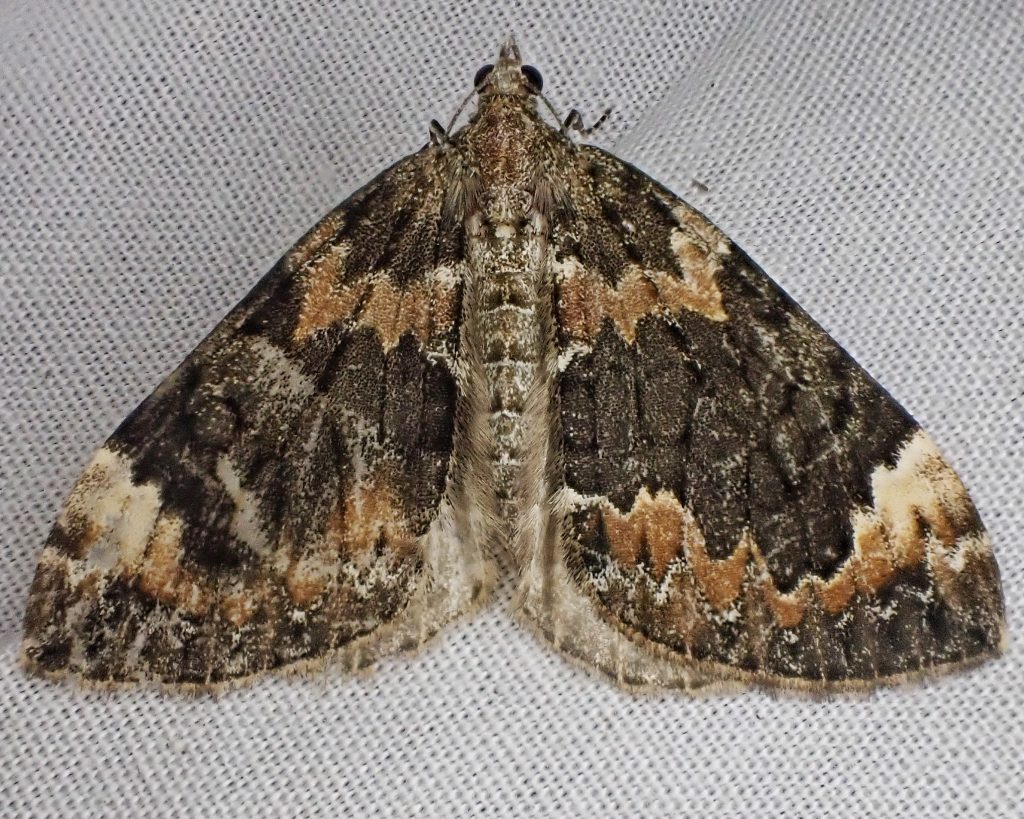
A few days later I decided to try again, this time at a spot I’d never run lights before, the trailhead of the Lacamas Creek trail in Camas, Washington, a location I chose because there seems to be good habitat there (good stands of hardwoods and conifers nearby, and a fair diversity of native forbs to go with the garlic mustard, ivy, and blackberries), and it’s fairly close to where Craig Sondergaard lives, so I hoped he’d be able to join me. I had noted, whilst pawing through my van during fishing trips, that my favorite UV light was atop several miscellaneous articles in an old laundry basket, and below it I could see the corner of a blue bag that I assumed contained the tent poles, ground cover, and cotton sheets that I rig around the UV light to give the moths someplace to land. So, having charged a couple batteries and loaded them into the van, I figured I was good to go. Alas, I was wrong, for the blue bag did not contain my sheets and structural support. It didn’t even contain the folding chair it was built to house. Eventually I remembered that I had removed many of the items I habitually leave in my van, to make room for the fence building materials I had hauled for my kid last winter when we were enclosing the back yard of the home they had just bought.
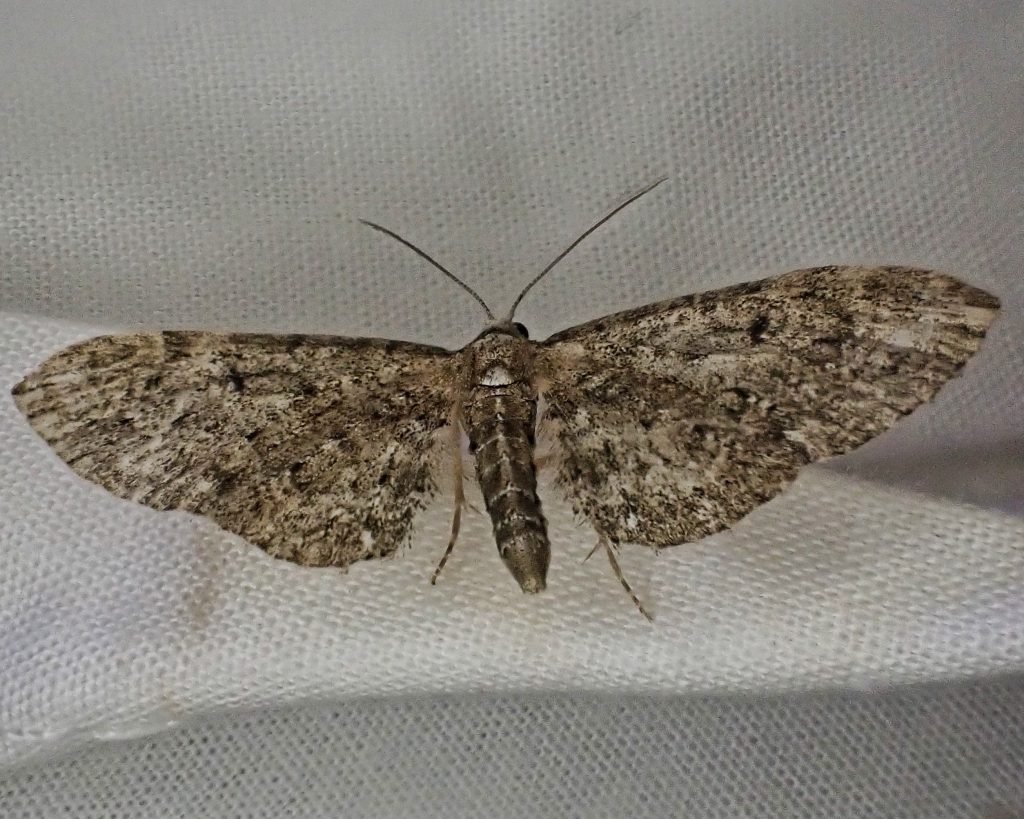
So, on Wednesday, I made sure I had everything I needed, and again headed to the Lacamas Creek trailhead, although I’d already been informed I’d have no friendly company. I arrived at 8:30, with the temperature at 63⁰, and wandered along the trail until the parking lot cleared out and the sun went down, then set things up and settled back to wait. At 9:25pm, roughly a half hour after sunset, some chironomid midges and other tiny Diptera started showing up, though I’m not quite masochistic enough to try to identify them. Yet. I usually say I’m running lights for moths, and they are often not only the stars of the show but the organisms that I have the best chance of identifying, but one of the coolest things about broadcasting ultraviolet light into a nighttime woodland is that bugs from several different orders will usually make an appearance. You just never know what will show up.
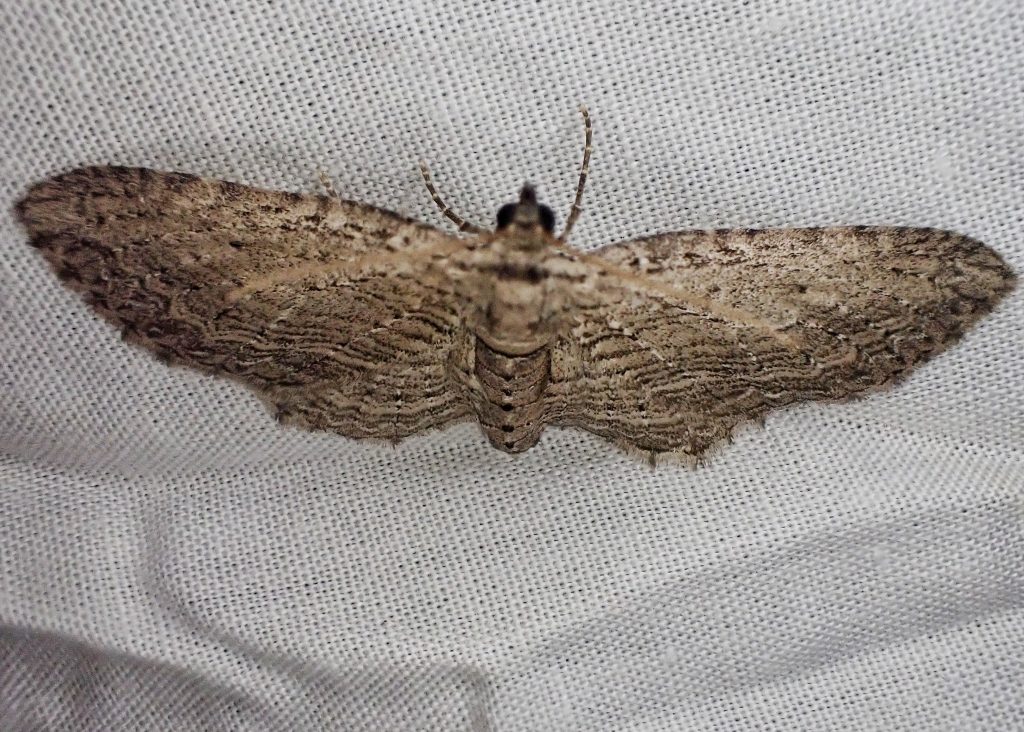
Around 10 some moths started showing up, although the first couple didn’t hang around, and the first couple that did hang around were little, brown, undistinguished micro moths. Then a little Eupethecia showed up, and I snapped my first photos, but until I’m ready to do genitalic dissections, most of the Eupethecia will remain unknown to me. Ah, but then a colorful and nicely patterned Geometer arrived, perched on the sheet, spooked when I got close, and then settled down on the floor of the tent and allowed me to photograph it. This was a Dysstroma citrata and I’ll be profiling it soon. It was still pretty slow, with a larger moth that I thought was a Eupethecia but that I now think is a Horisme intestinata, and two very pretty Phyllodesma americana putting in an appearance over the next 45 minutes, all of which kindly allowed me to take their portrait.
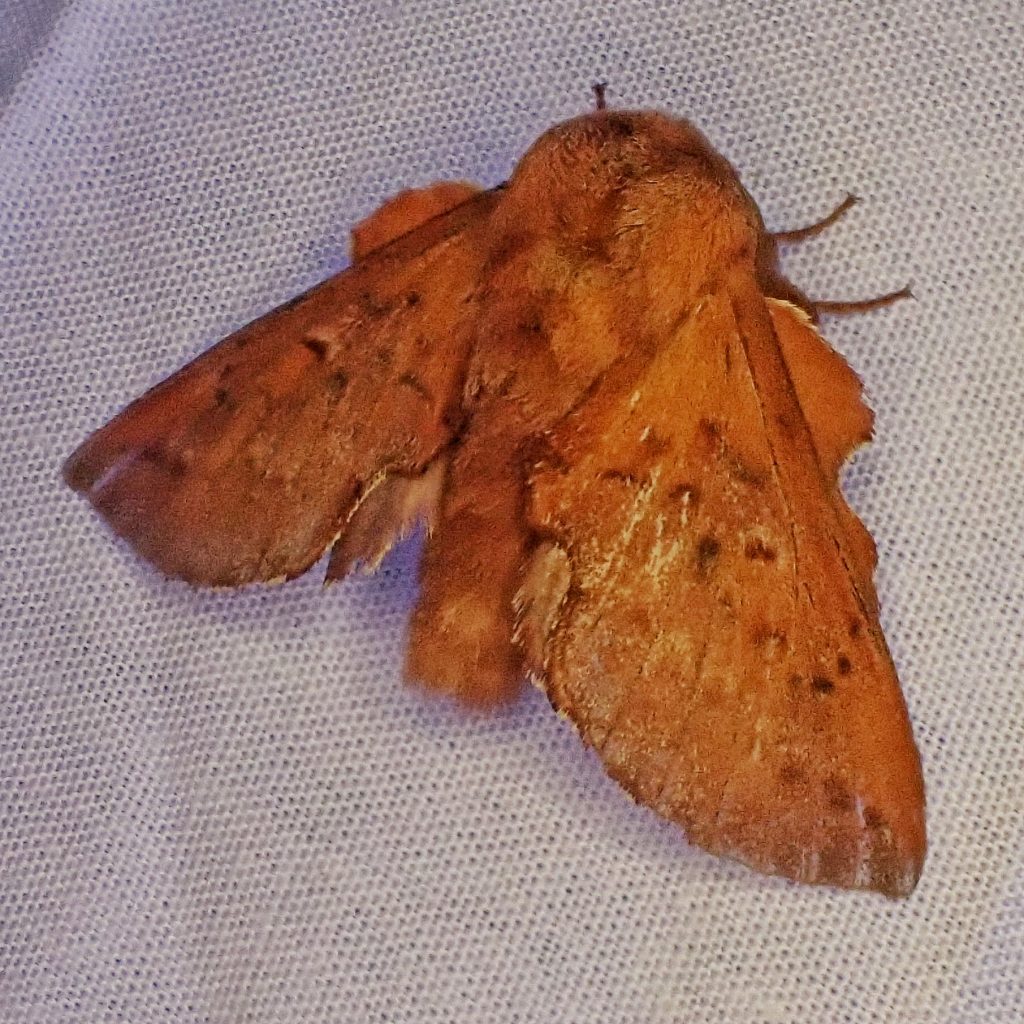
After that it was even slower. I don’t know if it was the dropping temperature (it was 49⁰ when I started breaking down the setup at midnight) or competition from the 7/8ths moon, or the large number of street and house lights right across 3rd avenue, but about all I could rustle up over the next hour+ were a few Armadillidium vulgare woodlice, a Dysdera crocata (Woodlouse Hunter) spider (which may have been hunting the woodlice), and a few little black carabid beetles that I was pleasantly surprised to be able to identify as Nebria brevicollis (European Gazelle Beetle), all of which may have just been passing through, rather than attracted to the lights.
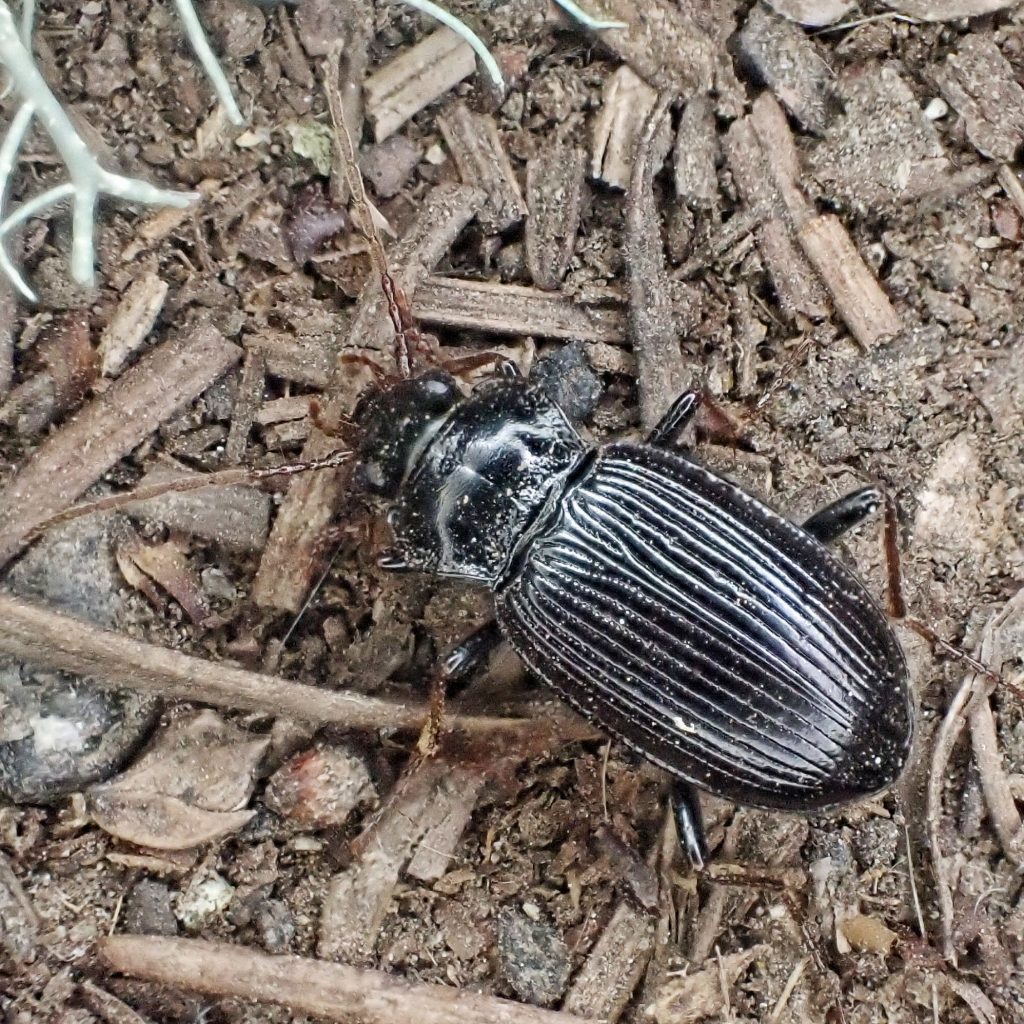
But there were also several fairly large, long legged greenish spiders that I now believe to be Cheiracanthium mildei, and since I didn’t see any of those outside of the immediate sheet area, I’m assuming they were attracted to the lights. Or they are just smart/conditioned enough to know that lights attract bugs. And then there was what I was pretty sure was a soldier beetle, and later confirmed as Podabrus conspiratus, a handsome beetle with velvet black elytra and a bright orange pronotum and neck, and Podabrus in general are known to be attracted to lights.
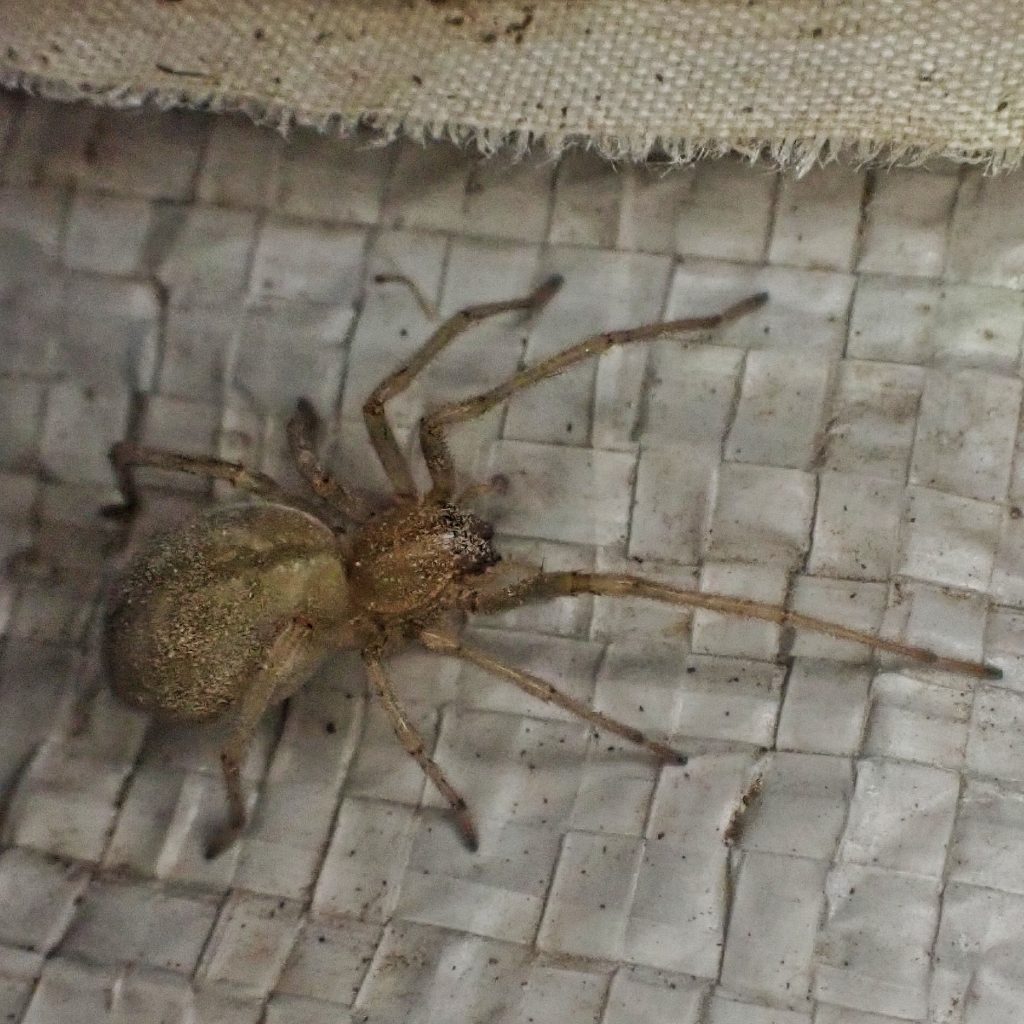
All in all, a worthwhile way to spend the evening. I didn’t get hassled by any cops, which is always a concern when running lights in urban areas in places that the cops may consider to be closing at dusk. The night was pleasant, and despite it not being the most aesthetically appealing place one could hunt for invertebrate wildlife, it was a peaceful place to be, except for the few minutes when someone pulled into the lot with what sounded like 2 large, barking dogs. But their owner had the decency to try to shut them up, and actually apologized for disturbing my peace. I found at least 3, and possibly 4, subjects for these profiles, and I shook off the rust and cobwebs from 7 months of not being out in the dark running lights. Now I’ve got the bug again (pun intended) and I’m already planning my next excursion.
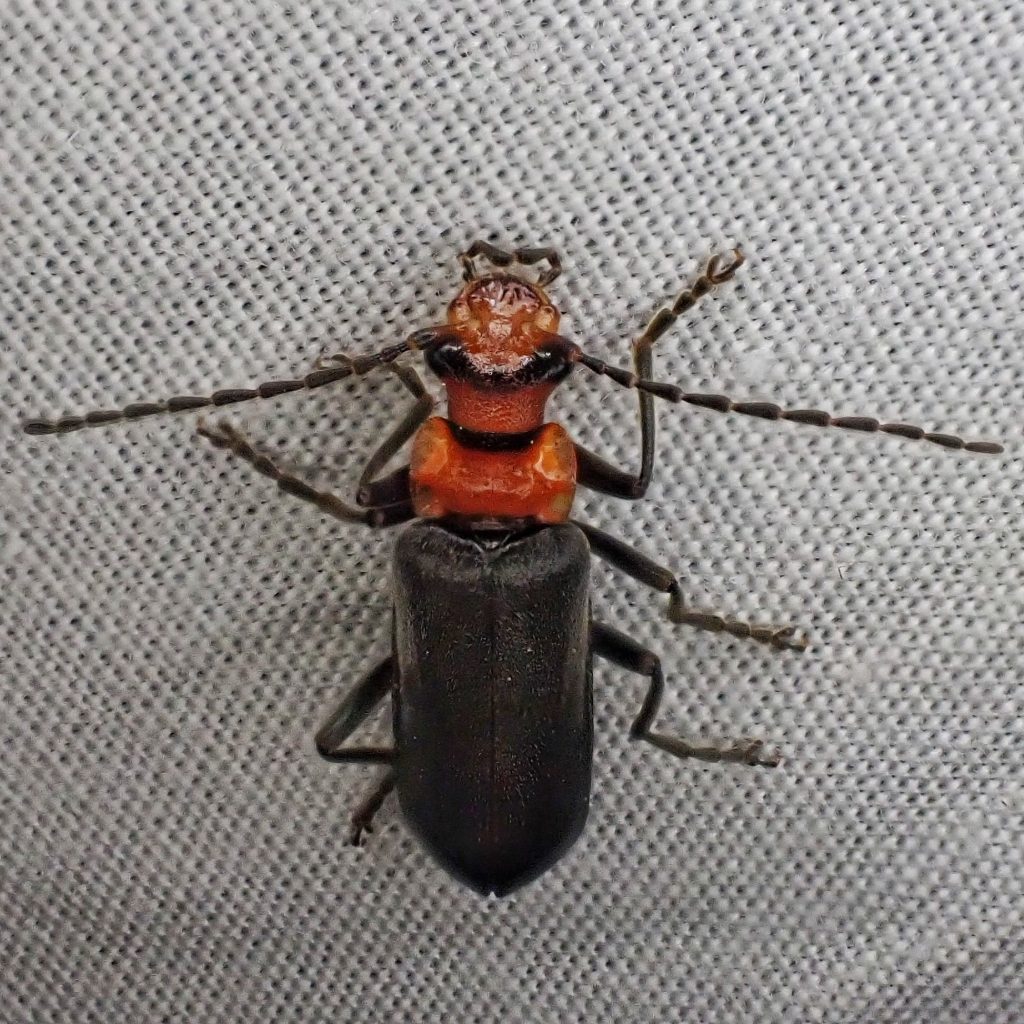
that sounds so interesting, I have to get myself organized to do that, I would love to see what moths arrive to be observed!
It is a fun way to spend an evening!
oh, what kind of UV light do you use?
Right now it’s just one that I bought at BioQuip a few years ago. But in the past I’ve had good success with screw in fluorescents and even a party still LED blacklight. But they required big car batteries and a transformer, and drained those batteries in just a couple hours, so this is simpler.
Very entertaining read. Thank you! I so enjoy reading these posts.
Thank you, Sharon!
What an absolutely fantastic blog! As an amateur or citizen scientist, I am really working to learn and grow and following your journey through the few hours spent scouring today has been amazing. I’m so thrilled to have found such an enthusiastic fellow learner. Thanks for sharing with us 🙂
Thanks for your kind words, Rusch! I’m glad you enjoyed it!